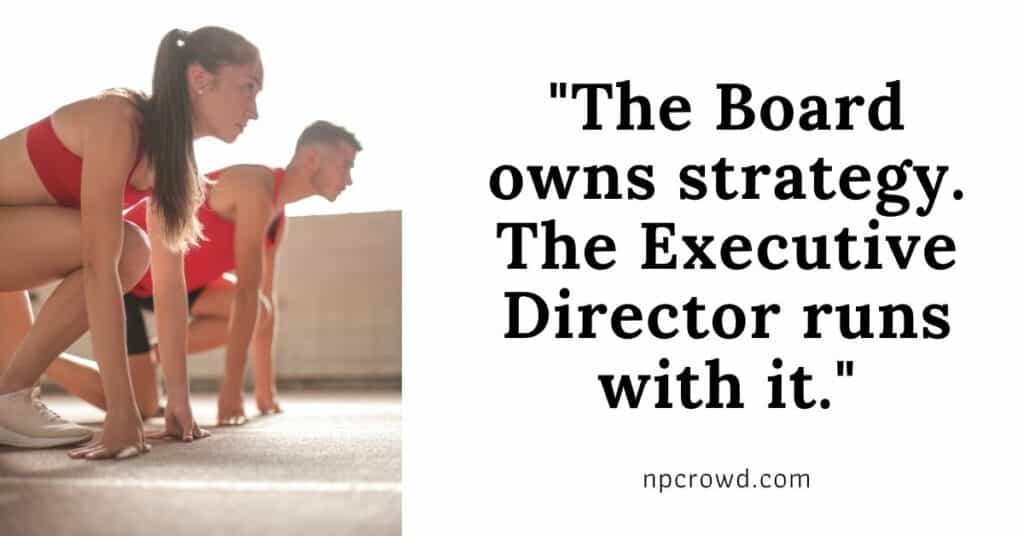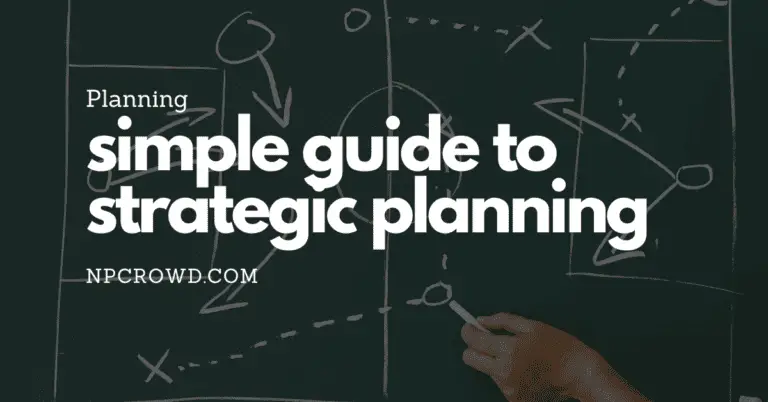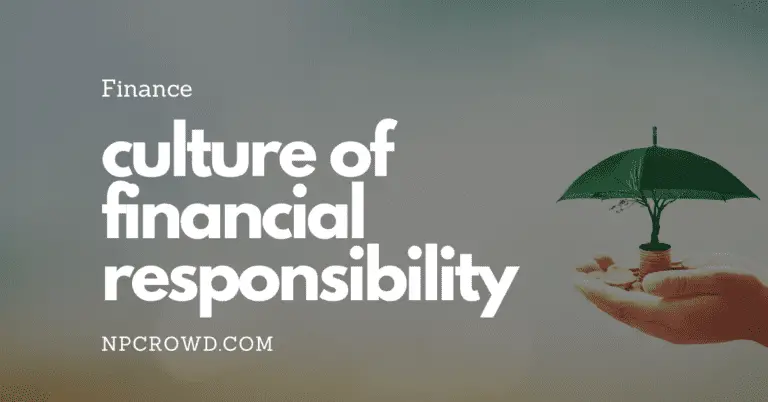Beat Executive Director Burnout With These Board Tips
Disclaimer: This post may contain affiliate links. These links, if used and purchases made, we may earn a small commission. These affiliate programs do not impact the recommendations we make or the resources we refer you to. Our focus is on providing you the best resources for your nonprofit journey.
Too many Executive Directors reach a stage of burnout in less than 7 years. One powerful antidote to this problem is building a better Board. Today we’ll look at a few tips to make Boards better so that Executive Directors lives are better.Recently, I heard an interview with Andrew Davis of BoardSource. In this interview, Andrew reminded me of a few struggles I’ve seen and helpful tips that are basic, but critical and often forgotten.
Remember, Boards don’t exist as an obstacle for the President to overcome, but rather as a trusted partner and advisor.
Who Leads Whom? Does the Executive Director Lead the Board or Vice Versa?

Does the Board lead the President or does the President lead the Board? This is a great question.
In a nonprofit, the Board is the Executive Director’s (CEO/President) boss. The CEO reports to the Board. That makes it easy when it comes to setting compensation and doing evaluations. But what about strategy and direction? This is where things can go wrong.
The partnership between the Board and the Executive Director is a critical component of successful nonprofits. Building a strong partnership requires a clear delineation of roles and responsibilities. I agree with Andrew Davis that in the best working boards, the Board, including the President, set the strategy and direction of the organization. This is contrary to many Presidents who think they know best and need to set the strategy alone.
A Board established strategy is a gift to Executive Directors. They can take the strategy and run with it because the execution of the strategy is clearly the President’s realm of responsibility. They will determine how to execute the strategy and provide periodic updates to the Board.
This clear direction and separation of roles help draw lines and sets expectations about where to look for accountability.
Gone are the days of a CEO saying to the Board, “Just get me the funding and we’ll figure out what to do with it. I got it”. This is not the best way to grow.
Board Strategy Releases CEO To Run Fast

When the Board creates the strategy and direction, the CEO is freed up to run hard and fast to execute that strategy. It is truly a freeing situation.
Think about the opposite scenario where the ED and staff spend an inordinate amount of time creating a strategy in the hope that the Board likes and approves it.
Then, when the Board rejects the strategy, not only are you back to square one, but now the staff are in a difficult state of mind. Who’s in charge here? That’s a confusing question that is caused by a lack of leadership.
This is a surefire recipe for burnout.
No matter what, communication is critical.
How To Deal With Unengaged Board Members
In nonprofits across the nation, it has not been uncommon to find boards made up of people who were idolized, provided access to funds and communities, or had a particular skill set. But, this approach can lead to a real gap in leadership between the Board and the Executive Director.
Instead, we need to find the right people that meet the needs of the organization. We must be intentional about how we build out the Board.
To paraphrase a point made by Andrew Davis in the interview, Board members must be connected to the communities they serve and the missions of the organizations they serve. They must have a connection with the problems the organization is trying to solve.
Choose the right Board members for the right reasons.
Absentee Board Members – Accountability Tools

Sure, the Board is your boss as the CEO, but the board still needs to be accountable.
There is a common set of core responsibilities and functions all nonprofit boards should serve and that includes holding fellow Board members accountable to meet expectations.
One of the greatest tools to address absentee or under-engaged board members is the job description. That’s right, board members, chairs, etc… should have job descriptions that define what is expected in the role.
It is not the Executive Director’s responsibility to hold board members accountable. Instead, teach the Board Chair or Governance Committee how to do this and leverage clearly articulated expectations from the approved and signed job description.
It is all about setting expectations upfront before there is a problem.
If you don’t have a job description for board members, I encourage you to contact your Board Chair today or add it to the next governance committee meeting agenda.
Conclusion
There are many ways to build a better Board, but these are a few that can help reduce Executive Director burnout. By taking some of the pressure off of the Executive Director and building a Board that is engaged and accountable, you can create an environment that is far more enjoyable to work in and that will help retain good Executive Directors.




![21+ Nonprofit Management Certificate Programs: Best List 7 21+ Nonprofit Management Certificate Programs [Best List]](https://npcrowd.com/wp-content/uploads/2021/08/Nonprofit-Management-Certificate-Programs-Best-List-768x402.jpg)


